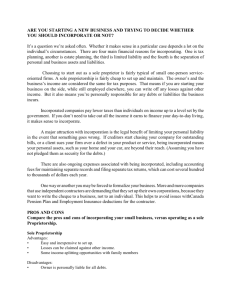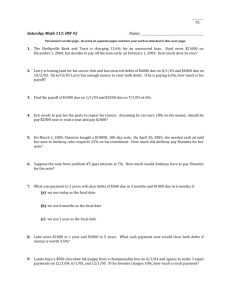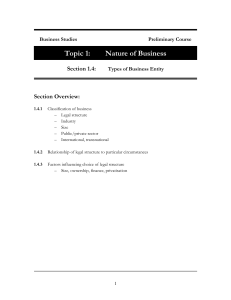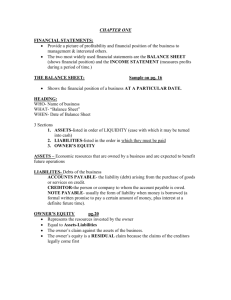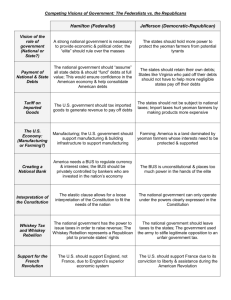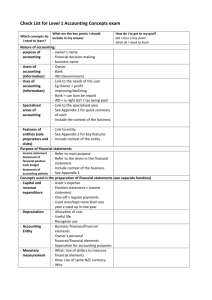Types of businesses - Classification by Industry Sector
advertisement
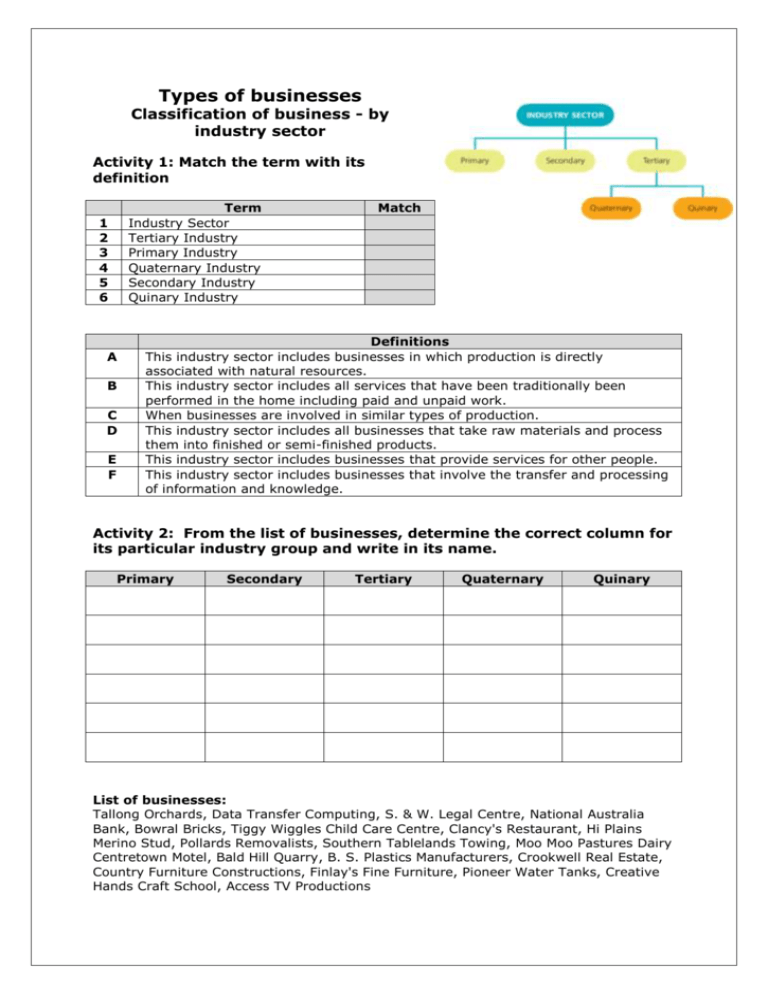
Types of businesses Classification of business - by industry sector Activity 1: Match the term with its definition Term Industry Sector Tertiary Industry Primary Industry Quaternary Industry Secondary Industry Quinary Industry 1 2 3 4 5 6 A B C D E F Match Definitions This industry sector includes businesses in which production is directly associated with natural resources. This industry sector includes all services that have been traditionally been performed in the home including paid and unpaid work. When businesses are involved in similar types of production. This industry sector includes all businesses that take raw materials and process them into finished or semi-finished products. This industry sector includes businesses that provide services for other people. This industry sector includes businesses that involve the transfer and processing of information and knowledge. Activity 2: From the list of businesses, determine the correct column for its particular industry group and write in its name. Primary Secondary Tertiary Quaternary Quinary List of businesses: Tallong Orchards, Data Transfer Computing, S. & W. Legal Centre, National Australia Bank, Bowral Bricks, Tiggy Wiggles Child Care Centre, Clancy's Restaurant, Hi Plains Merino Stud, Pollards Removalists, Southern Tablelands Towing, Moo Moo Pastures Dairy Centretown Motel, Bald Hill Quarry, B. S. Plastics Manufacturers, Crookwell Real Estate, Country Furniture Constructions, Finlay's Fine Furniture, Pioneer Water Tanks, Creative Hands Craft School, Access TV Productions Types of businesses Classification of business by legal structure Activity 1: Incorporated and unincorporated business structures (Gap Fill) A fourth ________________ for a business is according to the legal structure under which they are established. The main legal structures are depicted in the above diagram. ________________ businesses usually have a very specific legal structure, because they are established by individual ________________ of parliament. ________________sector businesses are generally divided into two main groups, ________________ and unincorporated enterprises, which are then divided into further subcategories. In an ________________enterprise, there is no ________________ difference between the owners and the ________________ itself, and therefore the owners have ________________ legal responsibility for all actions and ________________ of the business. That is the ________________ or partners in the business have ________________ ________________ – they are ________________ liable for all debts and are responsible for ________________ back all debts, even if it means selling the family home and using funds from their personal bank accounts. ________________ and partnerships are ________________ of unincorporated businesses. Being incorporated means that a business is officially registered as a ________________ and is ________________ to the requirements of the ________________. Once a business has been incorporated, it becomes a legal ________________ in its own right, ________________ from its owners. The individual owner/s (________________) of incorporated businesses have ________________ liability for the debts owed by the business. They are only responsible for repaying debts up to the amount of money he or she has paid for the business’s ________________. Private and _________________ companies are examples of incorporated businesses. Missing Words unincorporated, government, incorporated, complete, liability, sole traders, acts, classification, legal, shares, owners, shareholders, Corporations Act 2001, private, business, debts, unlimited, separate, public, examples, paying, limited, personally, subject, entity, company Activity 2: Match the term with its definition Term 1 2 3 4 5 6 7 8 9 10 A B C D E F G H I J Match Debts Legal structure Unlimited liability Limited liability Incorporated Entity Unincorporated Shareholder Share Liabilities Definitions This is a person who owns shares in (‘part of’) a publicly owned business. Shares in the publicly owned business can be bought and sold on the Australian Stock Exchange. This refers to the process companies go through to become a separate legal entity from the owner/s. That is, the business exists in its own right, its own legal entity. The financial obligations of a business to repay debts to lenders. The owners are not personally responsible for the debts of the business. Having a business structure where there is no legal separation between the business and its owners, who have complete legal responsibility for its actions. This word means a ‘piece’ of the business, that can be bought and sold – for a public company, these ‘pieces’ of the business are bought and sold on the Australian Stock Exchange (ASX). This is money that a business owes to other business such as suppliers and banks. The owners are personally responsible for the debts of the business. An organisation engaged in business activites regardless of its legal structure. This term describes one way to group Australian business based on how each group is treated under Australian law. There are different types including ‘sole trader’, ‘partnerships’, ‘public company’ and ‘private company’. Activity2: Complete the table below Legal Structure Sole Trader Partnership Definition Advantages Disadvantages
